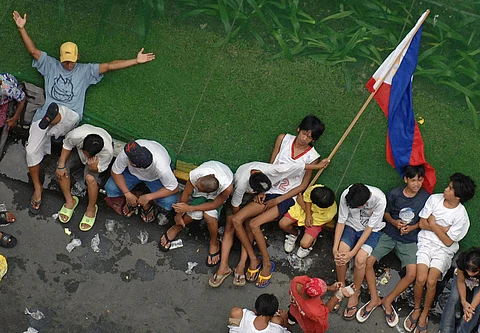
- NEWS
- the EDIT
- COMMENTARY
- BUSINESS
- LIFE
- SHOW
- ACTION
- GLOBAL GOALS
- SNAPS
- DYARYO TIRADA
- MORE

International Youth Day, celebrated annually on 12 August, holds special significance for the Philippines, a nation at a demographic sweet spot that is being touted to fuel economic progress toward developed-world status.
With a vibrant youth population, defined by the United Nations as individuals aged 15 to 24, the Philippines tapping this dynamic sector to drive innovation, growth, and societal change.
The Philippines has a working-age population that significantly outnumbers dependents.
An estimated 20 percent of Filipinos fall within the 15 to 24 age range, with a median age of around 25 years, according to the Philippine Statistics Authority.
The youthful demographic is a powerful engine for growth, boosting productivity and innovation in sectors like technology and services.
However, reaping these benefits requires strategic investments in education, employment, and empowerment to equip young Filipinos in facing a competitive global landscape.
Engines of change
The youth have always been a catalyst for progress, as evidenced by their participation in spurring economic growth .
International Youth Day celebrates their contributions while emphasizing the need to amplify their voices.
Education is a cornerstone, yet challenges like uneven educational quality, particularly in rural areas, persist.
Empowering youth through skills training aligned with emerging industries, such as artificial intelligence (AI) and renewable energy, becomes a critical factor for their success.
Civic engagement is equally vital. Platforms like the Sangguniang Kabataan (Youth Council) enable young leaders to influence local policies, but inclusivity for marginalized groups — indigenous youth, persons with disabilities, and those in conflict area — needs strengthening.
Despite their potential, Filipino youth face significant hurdles. Unemployment, around 14 percent, exceeds the national average, with many resorting to unstable gig economy jobs.
Mental health is another concern, with a 2023 National Center for Mental Health survey highlighting rising anxiety and depression among Filipinos who are at their precarious phase of life.
Limited access to mental health services, especially in rural areas, underscores the need for targeted support.
Gender disparities also persist, with young women facing barriers in STEM (science, technology, engineering and mathematics) fields despite higher educational attainment. Mentorship and scholarships can help bridge these gaps.
With their energy, creativity, and determination, young Filipinos are poised to lead the nation toward a brighter, more prosperous future.
As the country navigates its demographic sweet spot period that will persist until the middle of the century, the focus must be on empowering the youth to drive economic progress, champion social change, and shape a nation that reflects their highest aspirations.
By investing in the youth, the Philippines is taking stock of a legacy of progress that will benefit generations to come.
International Youth Day is a call to action to empower youth through innovation and engagement. Programs on vocational training and startup initiatives are needed to prepare Filipinos for emerging industries and mold them as a comparative advantage in a fiercely competitive world.
